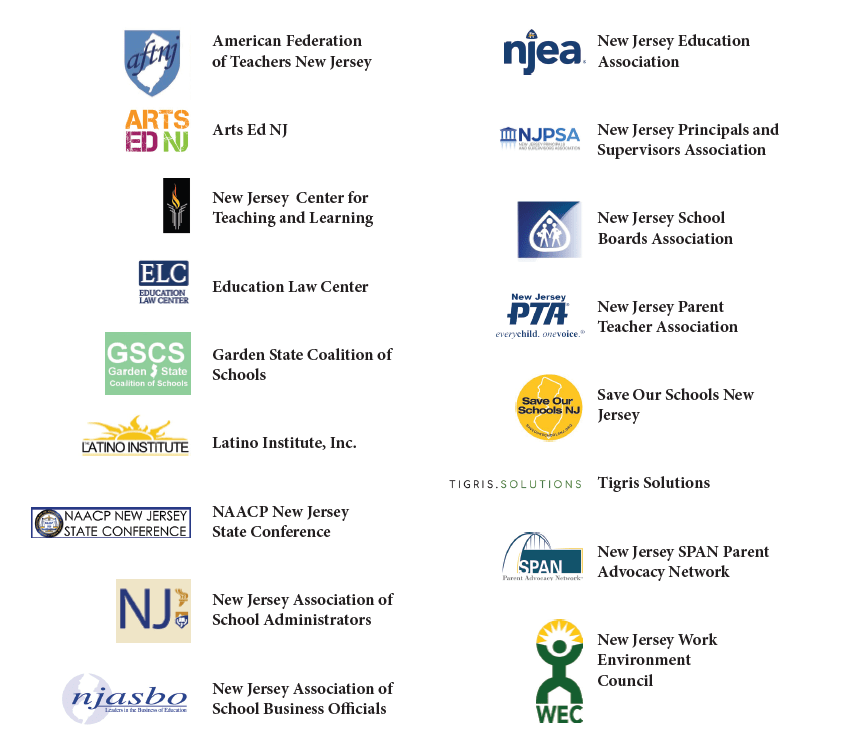 An open letter from public education advocates to New Jersey families and communities:
An open letter from public education advocates to New Jersey families and communities:
We write on behalf of New Jersey’s public education stakeholder groups to share our reflections on the challenges our schools and students have encountered in the last year and to offer a vision for how to help our students emerge from this pandemic emotionally strong and academically
successful.
The COVID-19 global pandemic affected every aspect of public education in New Jersey. Virtually overnight, our public schools transitioned to educating more than 1.3 million students remotely. We have had success under very, trying circumstances, but the tumult of the last 10 months has also made plain the many inequities we still need to address in order to deliver on the constitutional guarantee of a “thorough and efficient system of free public schools” for every New Jersey student in every New Jersey community.
In order to address those inequities and fulfill that promise, we have come together as advocates for students and public education to explore a plan for public education after the pandemic. We have committed ourselves to thoughtful, coherent and honest analysis of the issues and problems we face. We have begun the search for solutions based on research and on the actual experiences of educators, students, parents, boards of education and communities. We did so in the interest of providing policymakers with guidance from educational experts on what is needed now and in the future for our students to grow, learn and thrive.
This has been an intentional and inclusive effort, bringing together educators, administrators, parents and policymakers for multiple conversations, and we are just beginning! We used a report from the Learning Policy Institute called Restarting and Reinventing School: Learning in the Time of COVID and Beyond authored by Linda Darling- Hammond, Abby Schachner and Adam K. Edgerton as the starting point for our initial discussions. We not only held multiple meetings among the stakeholders, but many of the groups represented are holding meetings with their constituencies to ensure that a broad range of voices, perspectives and New Jersey experiences are included in our work and reflected in our evolving beliefs.
From these initial discussions, we share the following beliefs:
- While New Jersey is known for its great public schools, the challenges of the last 11 months have
heightened the need for intervention, particularly in communities where economic, social and equity
issues exist. - Adequate and equitable funding is essential to pursue policies that support all students, communities
and families. - Specific mandates without the resources to meet them are an obstacle to success.
Actions we take must be focused on:
- Building a better future by reimagining a more equitable, inclusive and culturally responsive learning
environment; - Meeting the social-emotional needs of students, educators and families;
- Building systems of shared leadership that include the voices of students, parents, communities, teachers,
other staff and administrators; - Ensuring equitable access to, and participation in, a well-rounded education focused on the needs of
the whole child anchored in the nine New Jersey Student Learning Standards; - Implementing a comprehensive system of assessment that supports the use of quality, formative assessments
in our classrooms to enhance learning; and, - Using systemic analysis of practice-based evidence and research to develop intentional, coherent efforts
to achieve long-term goals.
To have a meaningful positive impact on the learning conditions for students, and based upon these beliefs, we recommend
that any policy adoption by the state must ensure that there is additional resource support in state budget
appropriations for consistent implementation at the local school and district level.
While the Learning Policy Institute report is a useful research-based resource to inform statewide policy consideration,
we note that there are New Jersey-grounded resources that can likewise be used to inform policy and support
implementation. Examples of these other resources are appended to this letter.
We will continue to work collaboratively with all interested stakeholders to promote state policy and school/district
level actions to support growth in student learning.
In solidarity,

